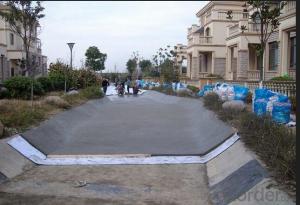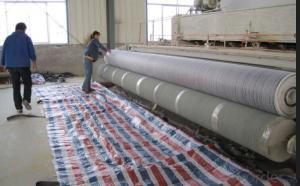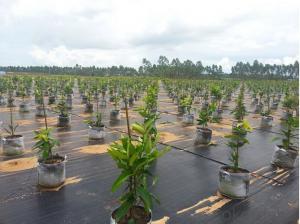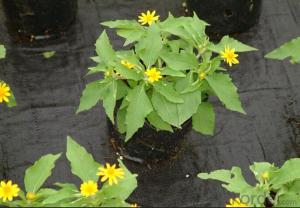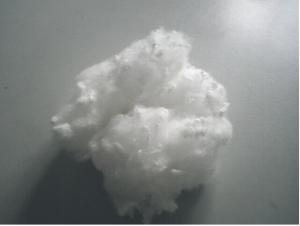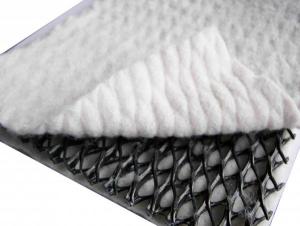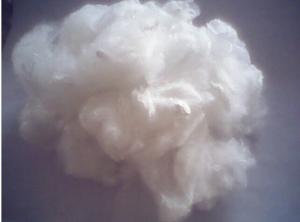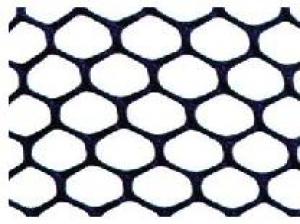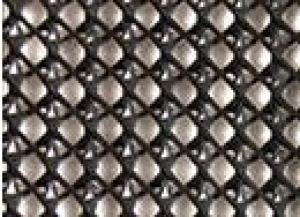Geocomposite Geosynthetic Clay Liner/GCL
- Loading Port:
- Qingdao
- Payment Terms:
- TT OR LC
- Min Order Qty:
- 5000 m²
- Supply Capability:
- 100000 m²/month
OKorder Service Pledge
OKorder Financial Service
You Might Also Like
Geocomposite Geosynthetic Clay Liner/GCL
Introduction:
Mass per unit ≥ 4000g / m²
Width: 4-6 m
size: 5.8 x 30m , or customized
bentonite sandwiched between two layers of geotextile
Features:
1) Environment friendly. Liu Fangzi GCL is made of natural raw materials of sodium bentonite. Aging and corrosion never happen. It can keep its quality and then it does not cause any injuries and pollution for human and the environment. It is not only waterproof, but also has good ventilation performance. It can stick up for the exchange of the ecological environment. It is a pure natural, new, green waterproof material.
2) Permanent waterproof, excellent performance. Natural sodium bentonite has been formed for billions of years.Its waterproof properties are much longer than that of the buildings. Sodium bentonite would transform to high density septum under hydro pressure. When the thickness is 3mm, the permeability is below a×10-11/sec(a=1~9), which equals to the density of 100 times of the clay with 30 mm thickness. Water retention performance is evident.
3) Easy to use. Bentonite powder, nails and washers are enough for connection and fixation. Construction is not constrained by weather conditions and it could be taken under cold or wet conditions. Bentonite powder is spread on overlap point. When water comes, GCL would be overlapped automatically. It has been so far the only material that starts the waterproof effect by water in the world. It is not necessary to take additional examination when the construction is completed. The repair works are easy in case of waterproof defects. Among the existing waterproof materials, GCL’s construction period is the shortest and its operation is the easiest. It has an eminent effect on shortening the construction period as well as saving the cost.
4) Strong Self-Restore Capacity. The integration between waterproof material and its target enables GCL a 20~28 times swelling volume. Even if concrete structure trembles or subsides, the bentonite in GCL would restore the crack of 2mm or below on the concrete structure immediately. Even if the diameter of perforation reaches 30 mm, the restoration will be finished within 15 days completely.
Applications:
Seepage proofing, anticorrosion, leaking stoppage and reinforcement
1. Municipal engineering, underground construction of subway, buildings as well as the roof tank.
2. Environmental sanitation, solid waste landfill, sewage farm, industrial waste
3. Water conservancy, lake, river, dam and reservoir.
4. Garden and park, artificial lake and golf cause pool.
5. Petrochemical engineering, mining industry and agriculture engineering
GCL Technical Index
Item | Specification | ||||
GCL-NP | GCL-OF | GCL-AH | |||
Mass per unit g/m2 | ≥ 4000 (not less than the specified value) | ≥ 4000 (not less than the specified value) | ≥ 4000 (not less than the specified value) | ||
GCL expansion index ml/2g | ≥24 | ≥24 | ≥24 | ||
Blue absorption power g/100g | ≥ 30 | ≥ 30 | ≥ 30 | ||
Tensile Strength N/ 100mm | ≥ 600 | ≥ 700 | ≥ 600 | ||
Elongation at maximum load % | ≥ 10 | ≥ 10 | ≥ 8 | ||
Peel strength N / 100mm | Nonwoven geotextile and woven geotextile | ≥ 40 | ≥ 40 | - | |
PE geommebrane and nonwoven geotextile | - | ≥ 30 | - | ||
Permeability coefficient m/s | ≤ 5.0x10-11 | ≤ 5.0x10-12 | ≤ 1.0x10-12 | ||
Hydrostatic pressure resistant | 0.4 Mpa , 1h, no leakage | 0.6 Mpa ,1h,no leakage | 0.6Mpa ,1h, no leakage | ||
Filter loss ml | ≤ 18 | ≤ 18 | ≤ 18 | ||
Durability of bentonite ml/ 2g | ≥ 20 | ≥ 20 | |||
FAQ:
How many quantity for one 20'' container?
About 5,000m2, 16rolls
What's your delivery time?
About 15-20days against deposit received
. What's your package?
Per roll with two pieces woven bag
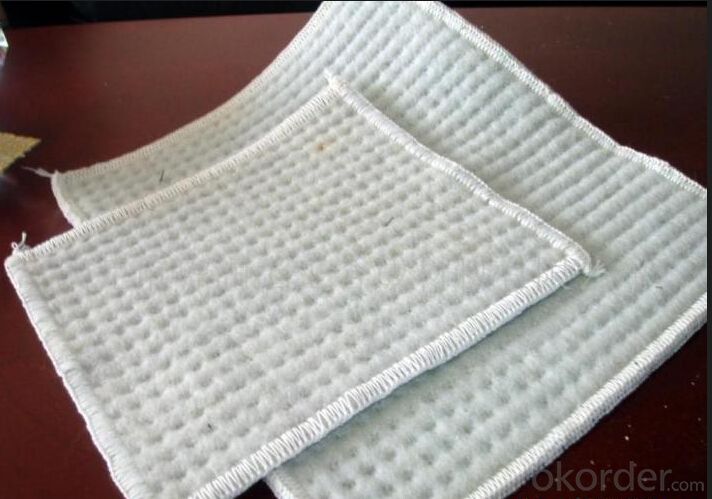
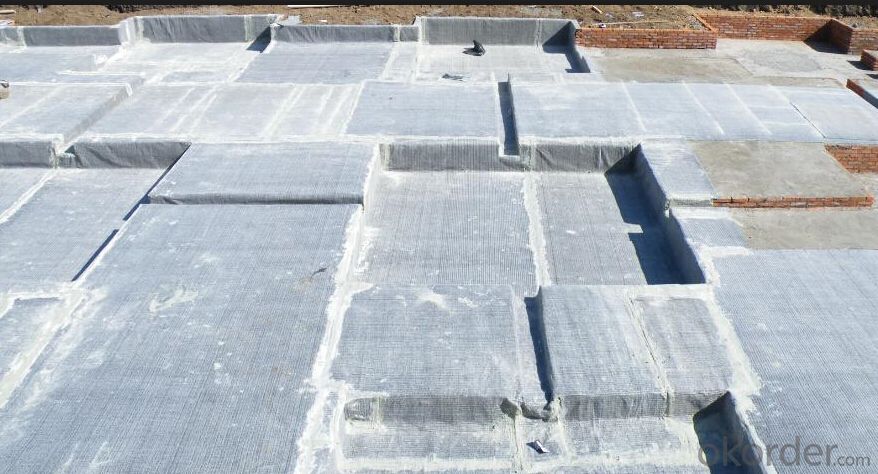
- Q:Are there any earthwork products specifically designed for golf course construction?
- Yes, there are earthwork products specifically designed for golf course construction. These products include specialized blends of soil, sand, and other materials that are formulated to meet the specific requirements of golf course construction, such as proper drainage, turf establishment, and playability. They are used to create the desired contours, slopes, and features of the golf course, ensuring optimal playing conditions.
- Q:How do geosynthetic materials contribute to groundwater protection?
- Geosynthetic materials contribute to groundwater protection by acting as a barrier or filter to prevent contaminants from infiltrating the groundwater system. They are used in various applications such as landfill liners, erosion control, and stormwater management, effectively reducing the risk of pollutants reaching the groundwater. Additionally, geosynthetics help in groundwater recharge by allowing the infiltration of clean water, replenishing the groundwater reserves.
- Q:How are geotextile mattresses used in earthwork?
- Geotextile mattresses are used in earthwork to provide erosion control, stabilize slopes, and protect soil from erosion caused by water flow. They are typically placed on the surface of slopes or embankments to prevent soil displacement and promote vegetation growth. These mattresses act as a barrier, allowing water to flow through while retaining the soil particles, thus reducing the risk of erosion and maintaining the stability of the earthwork.
- Q:Can earthwork products be used in groundwater protection projects?
- Yes, earthwork products can be used in groundwater protection projects. These products, such as geotextiles, erosion control blankets, and sediment barriers, can be employed to prevent soil erosion, control sediment runoff, and promote infiltration, thus safeguarding the quality of groundwater resources.
- Q:What are the three categories of civil engineering materials classified according to the basic composition?
- (1) organic materials made of organic materials, including: natural organic materials (such as wood, etc.), synthetic organic materials (such as plastic, etc.). (2) inorganic materials, inorganic materials, including: metal materials (such as steel, etc.), non-metallic materials (such as cement, etc.). (3) composite materials, organic - inorganic composite materials (such as glass fiber reinforced plastic, etc.), metal. Non - metallic composites (such as steel fiber concrete). Composite materials can be developed and a large number of applications, the reason is that it can overcome the weakness of a single material, play a composite material after the composite advantages to meet the requirements of contemporary civil engineering materials.
- Q:Can earthwork products be used for creating outdoor fire pits?
- Yes, earthwork products can be used for creating outdoor fire pits. Earthwork products such as stones, bricks, and paving materials can be used to build the foundation and walls of the fire pit, providing a sturdy and aesthetically pleasing structure. These materials are often heat-resistant and durable, making them suitable for outdoor fire pit construction.
- Q:Can geosynthetics be used for reinforcement in railway embankments?
- Yes, geosynthetics can be used for reinforcement in railway embankments. Geosynthetics such as geotextiles, geogrids, and geomembranes can provide additional strength, stability, and erosion control to railway embankments, improving their long-term performance and reducing maintenance requirements.
- Q:How can geosynthetic panels be used in canal lining projects?
- Geosynthetic panels can be used in canal lining projects as a cost-effective and efficient solution for preventing water leakage and erosion. These panels are designed to provide a strong barrier against seepage and can be installed quickly. By using geosynthetic panels, canals can be effectively lined, ensuring their longevity and minimizing maintenance requirements.
- Q:What are the advantages of using geosynthetic clay liners for landfill lining?
- Geosynthetic clay liners (GCLs) offer several advantages for landfill lining. Firstly, GCLs provide an effective barrier against the leakage of contaminants from the landfill into the surrounding soil and groundwater. Their low hydraulic conductivity helps prevent the migration of pollutants, protecting the environment and human health. Additionally, GCLs are easy to install, reducing construction time and costs. They are lightweight, flexible, and can be easily transported and unrolled on-site. Moreover, GCLs have high tensile strength and puncture resistance, enhancing their durability and long-term performance. These liners also have a self-sealing ability, which allows them to self-heal in the event of minor punctures or cuts, maintaining their integrity over time. Overall, the use of geosynthetic clay liners in landfill lining ensures improved containment, cost-effectiveness, and environmental protection.
- Q:What are the advantages of using geosynthetic materials in road embankment construction?
- There are several advantages of using geosynthetic materials in road embankment construction. Firstly, geosynthetics provide increased strength and stability to the embankment, ensuring long-term durability and resistance against settlement. Additionally, they offer excellent drainage capabilities, preventing the accumulation of water and reducing the risk of erosion. Moreover, geosynthetics are lightweight and easy to install, saving both time and labor during construction. They also promote environmental sustainability by reducing the need for natural resources like soil and aggregate. Overall, geosynthetic materials enhance the performance and lifespan of road embankments while providing cost-effective solutions.
1. Manufacturer Overview |
|
|---|---|
| Location | |
| Year Established | |
| Annual Output Value | |
| Main Markets | |
| Company Certifications | |
2. Manufacturer Certificates |
|
|---|---|
| a) Certification Name | |
| Range | |
| Reference | |
| Validity Period | |
3. Manufacturer Capability |
|
|---|---|
| a)Trade Capacity | |
| Nearest Port | |
| Export Percentage | |
| No.of Employees in Trade Department | |
| Language Spoken: | |
| b)Factory Information | |
| Factory Size: | |
| No. of Production Lines | |
| Contract Manufacturing | |
| Product Price Range | |
Send your message to us
Geocomposite Geosynthetic Clay Liner/GCL
- Loading Port:
- Qingdao
- Payment Terms:
- TT OR LC
- Min Order Qty:
- 5000 m²
- Supply Capability:
- 100000 m²/month
OKorder Service Pledge
OKorder Financial Service
Similar products
New products
Hot products
Hot Searches
Related keywords
